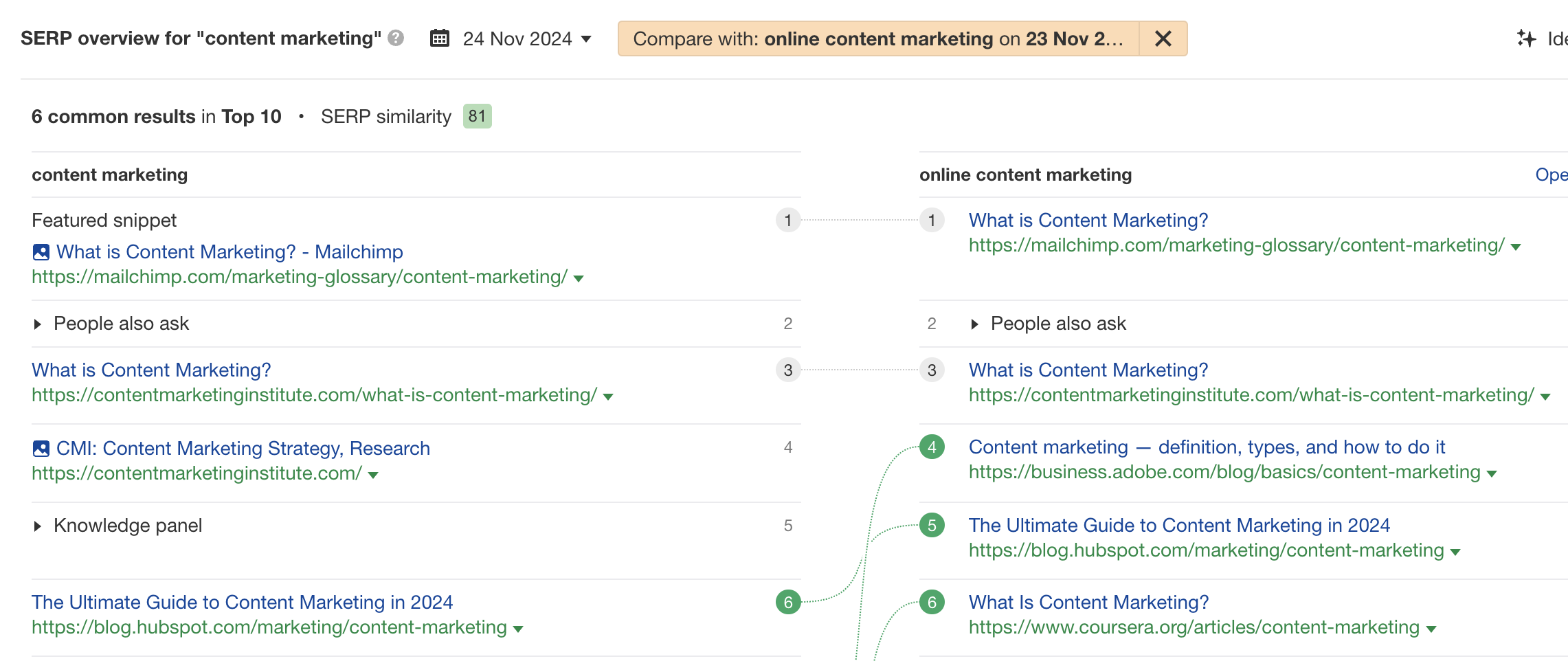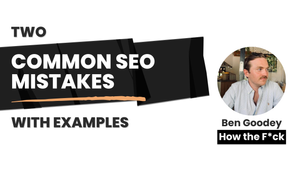Before we started working together, a client of mine published 50+ low-quality SEO blog posts.
A handful gained some traction, but the majority fell flat — and it all came down to two common mistakes that beginner SEOs often make.
The first mistake?
Treating keywords as just keywords and not 'topics'.
This meant there were often several blog posts that looked like this:
- Guide 1: The Ultimate Guide to Content Marketing
- Guide 2: Digital Content Marketing - A Definition
- Guide 3: Guide to Online Content Marketing: Key Challenges
Google treats these keywords (content marketing, digital content marketing, and online content marketing) as the same topic.

Seasoned SEOs will know that just one guide should've been written to target all three (and many, many more secondary keywords).
But this site almost had one blog per keyword. A situation that often causes cannibalization and reduces SEO performance.
We fixed this by:
- Choosing just one blog post (the one performing the best).
- Deleting and redirecting the others to it.
- Saving any relevant/useful content and merging it with the core article.
- Rewriting the article to add missing sections — so we had the most complete and useful guide to that topic on the internet.
They saw incredible results. But this wasn't the only thing we changed.

The second mistake?
The client had been creating content that didn't target the right search intent at all.
Search intent is the goal or purpose behind a searcher's query. The entire basis of content-led SEO is that Google serves our content as an answer to the needs of the person searching.
Getting this right can yield some crazy results.
In one example, one tweak to a landing page got a 516% increase in traffic because it improved the page's relevance to search intent.

The big lesson everyone must learn when writing for SEO: you (usually) can't write whatever you want to target a keyword and see success.
Your content must match the search intent.
Understandably, this isn't as easy to do as it might sound.
You really need to know your sh*t to get in your audience's head and understand what content would best help them.
My client had not been doing that very well (and, by the way, AI tools are terrible at it, often creating 1,000s of pages targeting the wrong intent).
One of the most common places I see this mistake happen is with commercial-intent keywords.
Here's an example:
Keyword: "Online Meeting Software"
The article the client wrote: The Importance of Online Meeting Software
Why this isn't gonna rank well: The intent behind the search "online meeting software" is commercial research. The user wants to discover tools/providers of online meeting software and consider which one is best for them.
They don't want to learn about the "importance of online meeting software". Yes, the keyword is included in the title. But the content itself does not help the reader with their current needs.
This = search intent mismatch.
Fixing these two common mistakes is one of the first things I teach SEO teams I work with.
Getting them right makes all your on-page and content work more impactful.
—Benny


